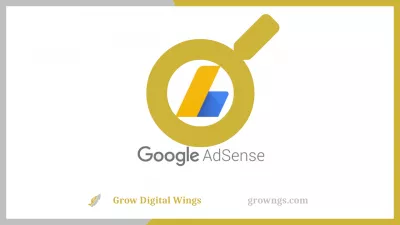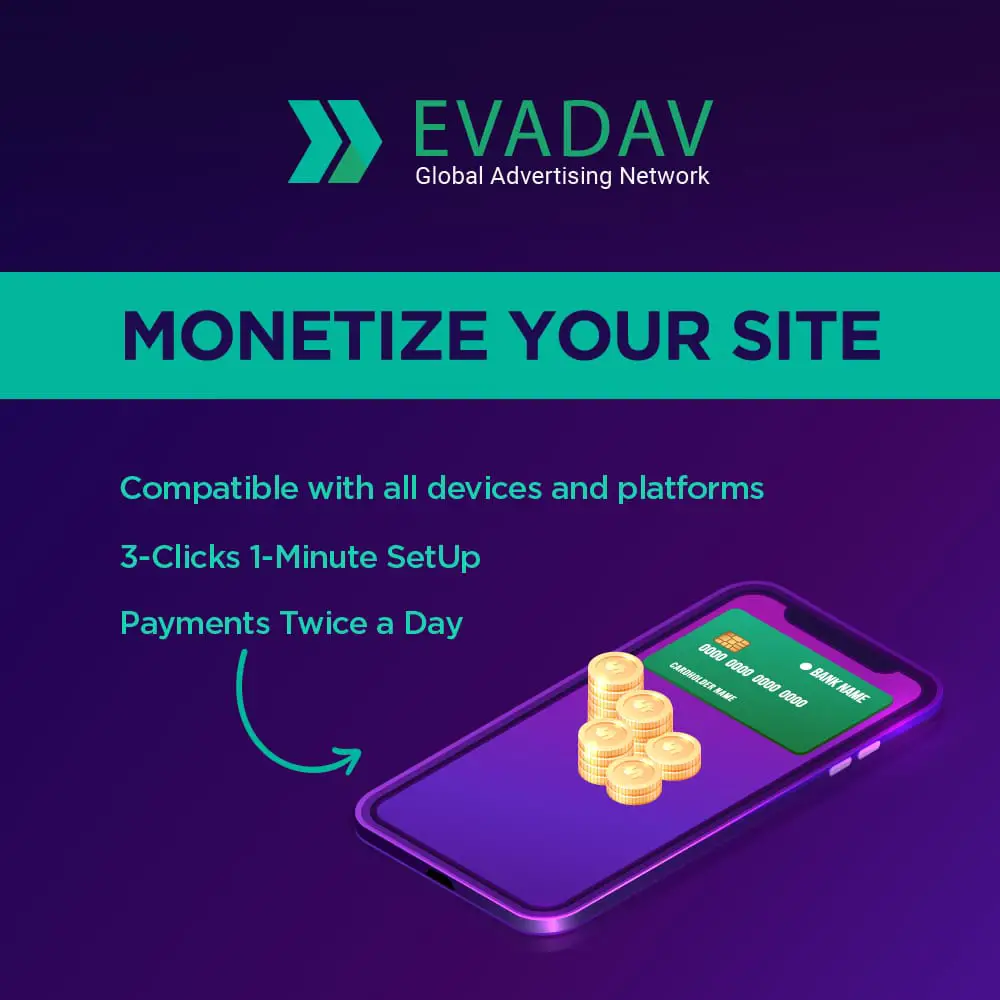Adsense Review - Pros and Cons
Adsense Review
Google Adsense is one of the oldest online ad networks still in existence, and arguably the largest. Therefore, they are very popular with both advertisers and publishers. In general, it will be difficult for publishers to beat the performance and eCPMs of AdSense ads, and while getting personalized support from Google is nearly impossible, the initial setup is usually pretty straightforward.
In this article we will talk about this platform, give a brief overview of Adsense, analyze the pros and cons, and summarize and evaluate the service.
Content:
What is Adsense?
Google AdSense is a program launched by Google that allows publishers on a network of content sites to serve automated text, image, video, or interactive advertisements that target a site's topic and audience.
It is the best ad publishing platform. Anyone can get creatives on their sites, apps or blogs with Adsense as soon as they meet the platform's minimum criteria. Adsense is really easy and convenient to use to get ad creatives on websites or blogs. All you need to do for this is to place a small piece of code in the header of your website / web page. As soon as he confirms this code, ads will start to appear on the site.
Google AdSense is a contextual advertising service that allows everyone to earn income from their blog.
Efficiency tools:
- You don't have to contact advertisers directly: the AdSense platform automatically provides you with access to a market with huge demand for advertising space.
- Due to the high competition among advertisers, the system selects the ads that are most suitable for the pages of your site.
- AdSense personalized ads for each user.
How does Adsense work?
First, Google must approve your site. Google does not disclose its metrics for approval. But if your site has unique content and adsense policies, you can apply. You must be at least 18 years old.
Once you get approved, you can arrange for ads to appear on your site. You can choose the types of ads that will be launched, as well as their location on the site page. However, publishers who will place ads with you also have the right to its location.
Adsense allows its advertisers to compete for space on your site based on its content and how likely they are to get clicks on their ads from visitors. Google defines the latter through the advertiser's quality rating.
Another group is what Google calls factors that influence the quality of the user experience from viewing ads. Google doesn't disclose what it is, but according to its help site, ad relevance and landing page experience are key.
Brief description of the platform
- Home page: Google Adsense
- Program Founded In: 2003
- Number of employees: 46,170 as of Q1 2014 according to Google Investor Relations
- Ownership: Public (GOOG)
- Profiles: Twitter, LinkedIn, Facebook, Google+, Crunchbase, BBB
Adsense Review
The control panel in Adsense is pretty simple but extremely functional. You will immediately see the profit for the current and previous days, as well as the total amount for the month and any outstanding balances (that is, what is owed to you at the moment). There is also a baseline breakdown between search and content revenue, if applicable, and a summary of relative performance over the past week. AdSense also allows users to create customized reports that can also be easily accessed from the dashboard.
In an advertising sense, there are many customization options. We may enable automated ads that will tailor ads to users based on their browsing history and activity. We may serve content-related advertisements on our pages and also have the ability to link advertisements.
AdSense provides step-by-step instructions for setting up ads on your site. They have a great online support service from which you can get answers in less than 24 hours. The entire report tells you a clear result, and it has all the types of ads you can customize on your site. It also provides instructions for blocking ads or ad categories that you don't need.
The Google Adsense Network is one of the most popular partners for publishers and bloggers looking to monetize their sites. The Adsense program is relatively straightforward for most publishers; Once approved, they will be able to generate code for various ad units that will then appear on their website. AdSense then starts serving ads and shares the revenue with the publisher.
AdSense offers a variety of ad units that go beyond the standard sizes (300x250, 728x90, 160x600), there are a dozen more ad types available - from a large 300x600 button to a 120x90 button. In total, publishers have 15 ad sizes to choose from, as well as several different link block options. In addition to traditional display ads, Google Adsense also offers publishers the ability to display “link boxes” on their sites. This alternate ad unit type appears as a string or lines of related text. Clicking on one of these links takes visitors to a landing page, which usually shows several ads deemed relevant to the visitor. For example, a visitor to a food site might see a link containing the terms “Cheese Fondue Recipes” and “Best Cookware”. These blocks will contain several ads from different advertisers. When a visitor clicks on one of these ads, the publisher (and Adsense) generate revenue. While they are often overlooked, links can be a significant source of additional income if implemented correctly.
While some of the ads served through Adsense are priced based on CPM, the vast majority are CPC ads. Thus, publishers are not compensated for showing ads, but for the fact that a visitor to their site clicks on it. Adsense tries to maximize the number of clicks on each ad. This is done in part through contextual analysis. Adsense analyzes the words that appear on the page where the ad is displayed and tries to find an ad for a related product or service to serve alongside that content.
The sheer size of Google Adsense is one of the biggest draws for publishers. Most of them will have no problem immediately filling 100% of their available inventory. More importantly, AdSense offers a wide pool of advertisers, which means that the technology can rotate across a wide variety of ad types until it finds a specific category or even a specific ad that performs well on your site. With a large number of advertisers available to offer as potential publisher partners, AdSense is likely to deliver a revenue per thousand pageviews that surpasses the vast majority of competitors. AdSense also has a pretty generous payout ratio; Publishers generate 68% of Content revenue (the type of Adsense units that account for the bulk of revenue for most publishers) and 51% of Search revenue. In comparison, many other networks only offer a 50/50 split. In addition, publishers are paid relatively quickly; most of them will receive their monthly check within 25 days of the end of the previous month.
Once approved, AdSense gives publishers significant control over the ads that appear on their sites. This includes the ability to customize various aspects of ads, such as colors and font sizes. Publishers also have the ability to immediately block any advertisers they don't want to see on their site (a big plus if you're trying to establish direct relationships at the same time), and even fine-tune the types of ads that appear on the site (for example, increase or decrease the frequency of ads from the Hobbies and Leisure category or block these types of ads completely). Publishers also have the option to show image-only ads on their site; this feature can be attractive to publishers who find that text ads reduce the perceived quality of their property.
The most common complaint about Adsense is the inability to deal directly with any Google representative; contacting a real person is nearly impossible unless you are a major publisher with a dedicated account. This can be frustrating if you're experiencing a technical problem, but it shouldn't be too damaging otherwise.
Given the immense popularity of Adsense, there is quite a lot of free information on optimization strategies and cures for common problems on the Internet. Another disadvantage is the limitation on the number of ad units; AdSense allows three display ad units (for example, 728x90 or 300x250), as well as three link boxes and two search boxes. For some sites - especially those with long vertical layouts - three ad units can seem very small. However, AdSense is flexible enough in the sense that publishers are allowed to complement it with other networks or direct deals. For example, a publisher might run three adsense units and three adsense units from Media.net until the non-adsense ad units are styled to resemble the appearance of the adsense units.
Even though AdSense provides detailed ad blocking features, some of the cunning advertisers keep updating their creatives or category information, so sometimes ads that we don't want to see come out. The revenue is not as big as we expected. They don't really provide preferred deals.
Conclusion
To summarize, Google Adsense is a reliable platform for placing ad creatives on your website. Almost everyone who is somehow connected with advertising on the Internet has heard about this service. And this speaks of the reliability of this site. We rate AdSense at 5 out of 5. The downside is due to the fact that there are now many similar systems that offer much more functionality.
Frequently Asked Questions
- What are the advantages and disadvantages of using Google Adsense for website monetization?
- Pros of Adsense include ease of use, reliability, wide ad network, and compatibility with Google services. Cons may include lower earnings compared to other ad networks, strict compliance rules, and limited control over ad types and placement.

